Table of contents
Saffron is the most expensive spice in the world and can be healthy or poisonous depending on the amount. The stigma of the crocus flower ( Crocus sativus) is harvested by hand. It is usually available dried ( raw?) and also in organic quality.
Use in the kitchen
Saffron is a very popular spice that gives it a golden yellow color and is very versatile. The taste of saffron is unique and therefore difficult to describe. The aroma is subtle and complex at the same time; it tastes both earthy and floral, with a slightly bitter and spicy note. This expensive spice should be used sparingly. Too much saffron can leave a bitter taste and can be poisonous in larger quantities (see health effects). A few threads are enough to add flavor and color to dishes.
Can you eat saffron raw? Saffron is edible raw, but the freshly harvested saffron threads wilt quickly, so drying is the best way to preserve it. In addition, it only develops its full aroma when dried. The diverse ingredients of saffron are released slowly. It is advisable not to eat saffron pure, but to let it steep in a warm liquid or in a dish. To ensure even distribution in the dish, you can finely grind the dried saffron with a mortar and let the saffron powder steep in water, vegetable stock or plant drinks (15-20 minutes). Only then should you add the liquid to the dish. But you can also add whole saffron threads to many dishes at the end of the cooking time.
In terms of taste and color, saffron goes just as well with sweet vegan desserts (cream desserts, ice cream, cakes) as it does with hearty main dishes. Saffron is used to color pasta (spaghetti), pastries (flatbread), sauces, soups or to season vegetable dishes.
Spices that go well with saffron are cardamom, cinnamon, cloves andblack pepper.
In Moroccan cuisine, saffron is a classic ingredient in tajine dishes. Saffron is also used in a variety of rice dishes: the Spanish 'paella', the Italian 'risotto alla milanese' or the Indian 'byriani' traditionally contain saffron. In Scandinavia, a sweet holiday bread is baked with saffron (lussekatter). A classic French dish with saffron is 'bouillabaisse' (fish soup).
Vegan recipe for vegetable "tajine"
Ingredients (for 5 servings): 1 pinch of saffron (organic), 3 garlic cloves, 10 g ginger, 2 tsp rapeseed oil, 1 tsp ras el-hanout, 1 tbsp pureed dried tomatoes, 2.5 kg mixed vegetables ( aubergines, carrots, cherry tomatoes, red onions, butternut squash, peppers, okra), 400 g cooked chickpeas, a pickled lemon (organic!), 300 g couscous, 20 g mixed fresh herbs ( dill, mint, parsley), 20 g flaked almonds.
Preparation: First Wash the eggplant, cut into bite-sized pieces and salt evenly (improves taste and cooking properties). Put the aubergine to one side. Put the saffron in a bowl and leave to steep in 500 ml of hot water. In the meantime, peel the garlic. Finely chop the garlic and ginger. Briefly fry in a large pan with 2 tablespoons of oil. Add the ras el-hanout and heat at a medium temperature. Stir in the tomato paste and sauté for a minute, stirring regularly. Now fry the aubergine until it is soft. Wash the remaining vegetables, cut into large cubes and add to the pan. Roughly chop the preserved lemon (remove the seeds) and fry briefly together with the chickpeas. Now deglaze with the saffron water and cook covered at a low heat for 20 minutes until the vegetables are tender. Stir now and again.
Meanwhile, cover the couscous with boiling water, leave to swell for 10 minutes and season with salt and pepper. Use a fork to loosen the couscous before serving. Wash the herbs, chop roughly and toast the flaked almonds. Divide the "tajine" and the couscous onto plates and garnish with almonds or herbs.
Making tea with saffron
Saffron tastes great in green tea, black tea or rooibos tea. To do this, brew the tea you want and add 0.1 g of finely grated saffron threads. After the usual brewing time, you can sweeten the saffron tea with honey, agave syrup or maple syrup if required. A dash of plant milk (e.g. almond milk) also goes well with this.
Vegan recipes with saffron can be found under the note: " Recipes that have the most of this ingredient ".
| Not only vegans or vegetarians should read this: Vegans often eat unhealthily. Avoidable nutritional errors. |
Purchasing - Storage
Major retailers such as Coop, Migros, Denner, Volg, Spar, Aldi, Lidl, Rewe, Edeka, Hofer or Billa sell not only saffron threads but also ground saffron (saffron powder). Organic saffron can be found in organic shops, organic supermarkets ( Denn's Biomarkt or Alnatura), health food stores, drugstores or on the Internet.
Saffron is in season in autumn. The exact time of harvest can vary depending on the region and climate, but in general the saffron flowers open in the morning hours in late summer to autumn. The saffron threads, which make up the most valuable part of the flower, are carefully picked by hand during this time. In Morocco, for example, the harvest takes place in late October/early November.
Since saffron is very valuable, you have to be prepared for counterfeits when buying it. Stigmas of other crocus species, petals of the marigold (Calendula officinalis) or petals of the safflower ( Carthamnus tinctorius), turmeric ( Curcuma longa), fruit extract of Gardenia jasminoides and Buddleja officinalis (buddleia) are used, among other things, to dilute saffron. Animal or synthetic dyes can also be included. Adulterations are, understandably, more common in ground saffron. Dubious sellers often label saffron and turmeric under the name "saffron" in order to mislead consumers. However, there are chemical and physical methods that make it possible to verify the purity of saffron. 9,2 Therefore, always purchase saffron from trustworthy sources.
We cannot confirm with certainty whether purchased saffron is still raw. Saffron threads are the stigmas (the female reproductive organs) of the crocus flower ( Crocus sativus). The bright red threads are carefully picked by hand and require rapid drying, otherwise they wilt in a very short time. The drying process is therefore an essential step in preserving the saffron and concentrating its flavor and aroma. There are various methods of drying saffron, from air drying to oven drying to freeze drying, everything is possible. During our research, we could hardly find any products that stated the drying temperature or process. Only a few retailers advertise raw food quality online either. Saffron dried gently, slowly and at low heat can be of higher quality. However, with very slow drying, bacterial contamination is a problem. In one study, saffron dried at 55 °C was of the best quality. The authors of this study were also able to identify a significant difference in quality between organically and conventionally produced saffron: organic was clearly better. 20
The price per gram of saffron depends on the quality, purity and cultivation method (organic vs. conventional). The availability of saffron varies depending on the size of the store, catchment area, etc. You can find our recorded food prices for the DA-CH countries above under the ingredient image - and by clicking you can see their development at various suppliers.
Found in the wild
Although saffron ( Crocus sativus) is not native to Central Europe, it does occasionally grow in the wild. There is a risk of confusion with the similar-looking, highly poisonous autumn crocus ( Colchicum autumnale). For more information, see the section 'Risk of confusion'.
Storage tips
Saffron threads retain their aroma when stored dry and protected from light. Do not store saffron in the refrigerator, but rather at room temperature in a kitchen cupboard or pantry.
Ingredients - Nutritional Values - Calories
Since the usual use of saffron is less than 1 g for a whole dish, the ingredient information is irrelevant. Nevertheless, you can read the nutritional values of saffron (including calorie content) in the nutrient tables above.
The only thing worth mentioning is the amount of manganese, which we show here per 1 g (instead of per 100 g as usual) : with 0.28 mg, 1 g of saffron covers 14.2% of the daily requirement, which is comparable to cardamom. Ground cloves have twice as much manganese content. With a portion of vegan whole grain macaroni (3.1 mg/100g covers 153% of the daily requirement) you can cover your manganese requirements much better. 1
In addition to vitamin C (0.81 mg/1g), saffron also contains potassium (17.24 mg/1g) and iron (0.1 mg/1g). 1
You can find all the saffron ingredients, the coverage of the daily requirement and comparison values with other ingredients in our nutrient tables. In the article Nutrients explained you will get a detailed insight into the topic.
Effects on health
How healthy is saffron? The ingredients in saffron can have a health-promoting effect. However, too much saffron is poisonous. How much saffron can you eat? A safe daily dose according to human studies is 0.5-1.5 g. 2 Saffron is not a recognized medicine. However, there are study results that show positive effects on health. Studies on its use in neurological and mental illnesses in particular show promising results. In vitro and in vivo, as well as clinical studies indicate a neuroprotective effect. Crocin, crocetin and safranal are responsible for this effect. Researchers have been able to demonstrate a suppression of TNF-alpha-induced apoptosis; in neurodegenerative diseases such as Alzheimer's and Parkinson's, overexpression of TNF-alpha was observed. One study observed a possible effect of saffron on Alzheimer's patients. A methanolic saffron extract helped Alzheimer's patients to improve their cognitive ability and improve their learning and memory. 2
Further studies have shown anticonvulsive (antiepileptic), sedative and anxiolytic effects (anxiety relief). These effects can be explained by an interaction with GABA(A) and opioid receptors, which has been demonstrated for safranal, an important mechanism of action for its neuroprotective effect. Saffron also has an antidepressant effect. Studies have shown that certain components (eg crocin) can potentially increase serotonin and noradrenaline levels. 2,16
In a 6-week randomized, double-blind study, 54 patients (children aged 6-17 years) with an ADHD diagnosis were examined. The children were randomly given either 20-30 mg/day (depending on body weight) of methylphenidate (an ADHD medication) or 20-30 mg/day of saffron capsules. Saffron was just as effective as methylphenidate in treating ADHD. 3
Furthermore, diuretic and antilithogenic (prevents the formation of urinary stones) properties have been described. Due to its slightly bitter, aromatic taste, saffron stimulates the digestive juices and stimulates the appetite. In the stomach, saffron has protective and antiulcer effects. Saffron also has an antioxidant effect, for which safranal, the crocins and carotenoids are responsible. The antioxidant potency of the crocins exceeds that of alpha-tocopherol. There is a protective effect in stress-related gastric ulcerative lesions. Saffron extracts also have a hepatoprotective effect (protects the liver). Aqueous and alcoholic extracts show a suppression of pain perception (antinociceptive) and inhibit inflammation in acute and chronic inflammatory processes. There is also evidence of cholesterol-lowering, antiarteriosclerotic, antidiabetic and hypotensive effects. 2 Saffron may also have a positive effect on menstrual problems. 1 2
What effect does saffron have on blood pressure? A double-blind study showed a significant improvement in systolic blood pressure in type 2 diabetes mellitus patients compared to the placebo group. Each group consisted of 40 participants. The former took 100 mg of saffron powder daily for 12 weeks. However, there was no significant improvement in diastolic blood pressure, liver function and nephropathy indices. 4
Does saffron make losing weight easier? There is evidence that saffron has a potentially positive effect on obesity, which is confirmed by animal studies. 10 There are also studies that do not confirm this effect. 11 There are no clear study results that show that saffron makes losing weight easier. Saffron has a positive effect on the intestinal microbes and general health, which creates a good basis for a healthy body weight. 15
Dangers - Intolerances - Side effects
Saffron has been used as a food additive for several centuries without complications. According to some studies, doses of up to 1.5 g/day are considered safe, but doses of more than 5 g/day can cause undesirable effects such as vomiting, uterine bleeding, hematuria, bleeding of the gastrointestinal mucosa, and dizziness and drowsiness. 9 Saffron also has an abortifacient effect. The lethal dose for humans is 5-20 g. 2.5
No side effects are known in therapeutic and culinary doses (a few milligrams to 1 gram). 2
Risk of confusion
Saffron crocus ( Crocus sativus) blooms at the same time as autumn crocus ( Colchicum autumnale), which can be found wild in many meadows, open forests and also in gardens. The two flowers look very similar. Autumn crocus is extremely poisonous and can be fatal if any part of the plant is eaten. The two can be distinguished by their foliage and stigmas. Saffron crocus has fine green foliage that is reminiscent of chives. Autumn crocus blooms in autumn without any foliage at all. The green leaves of autumn crocus can only be seen in spring. Another difference is the female genitalia or stigmas: the saffron crocus has a very large, long and deep orange to reddish colored stigma. The autumn crocus, on the other hand, has an inconspicuous, shorter, white stigma with a yellow style. 19
Use as a recognized medicinal plant
Saffron is not a recognized medicinal plant. In 1987, saffron even received a negative assessment from Commission E; the available scientific evidence was insufficient. 5
Folk medicine - natural medicine
Saffron extracts and tinctures have been used in traditional medicine for centuries. Among other things, saffron was used as an antispasmodic, digestive, calming, carminative (flatulent), diaphoretic, expectorant, stomachic, stimulant, aphrodisiac and abortifacient. Saffron used to be a proven remedy for treating sexually transmitted diseases and for regulating and relieving menstruation. The abortifacient effect of the spice was known in the Middle Ages. Midwives used saffron during childbirth because of its calming and antispasmodic effect. Saffron was also used to treat eye diseases and to heal wounds, fractures and joint pain. 17
Saffron extracts can now be found in food supplements, e.g. in 'natural mood enhancers'. 5
Ecological footprint - animal welfare
In most of the saffron's origins, saffron production methods have evolved based on local conditions, including ecological, social and agronomic circumstances. In these regions, saffron farmers generally do not use agrochemicals. Traditional methods for increasing soil fertility and controlling pests, diseases and weeds, based on the principles of organic farming and with minimal impact on the environment, are used here. Unfortunately, saffron produced in this way is often not certified and we cannot distinguish it from conventionally produced saffron. In developing countries, saffron producers are usually small farmers and cannot afford the expensive costs of international controls and certifications. In 1996, the International Federation of Agriculture Movement ( IFOAM) proposed an internal control system (ICS) based on group certification, which is now widely used to certify smallholder groups in developing countries. 9
It is very important to support such organically managed farms, among other things to keep the ecological footprint of products small. It is often difficult to produce the same amount using organic methods as with conventional methods, i.e. using synthetic fertilizers and chemical pesticides. But it seems to work with saffron, as two studies in Iran on the largest saffron producer show. 18,20 Unfortunately, saffron is a victim of the effects of climate change, which is endangering the livelihoods of thousands of people who make their living from growing or trading saffron. 6
Worldwide occurrence - cultivation
Saffron is a spice with a very long tradition, especially in the countries of the Mediterranean and the Middle East. 2 The cultivation of saffron can be traced back to 2300 BC. 7 The origin of saffron is thought to be in Greece or Iran. 20
Iran accounts for about 80% of the world's saffron production. The remaining 20% is made up of countries such as: Greece, Pakistan, China, France, India, Spain, Switzerland, Italy and Austria. 13,14
Saffron is cultivated in mild to dry climate conditions, with cold winters. It plays an interesting role in low-input agricultural systems and as an alternative crop. Saffron is very well suited to organic and low-input agriculture due to its requirements (in some growing areas, no irrigation, no chemical fertilization and no chemical weed control are required). 7
Cultivation - Harvest
The harvest takes place in the morning hours in autumn. The stigmas are plucked out of the flowers by hand, including the ends of the style. Products freed from the remains of the style, the so-called saffron tips, are called 'saffron electus'. 2 To produce 1 kg of dried saffron, you need around 80 kg of flowers and 450,000 stigmas. 13
Growing it in your own garden
Saffron can also be grown in Central Europe. In Switzerland and Austria, cultivation has a long tradition. However, since the harvest is very labor-intensive, saffron mainly comes from low-wage countries.
Further information
Saffron Crocus sativus belongs to the iris family (Iridaceae). The saffron flower has 6 purple leaves that open into the flower tube. A light yellow style grows from this every year, which divides at the end into three to six 2.5-4.5 cm long red stigmas. These stigma branches are the valuable saffron spice. 2
Saffron is a sterile clone, meaning the plant only reproduces vegetatively via the plant tuber. 21
Alternative names
Synonyms for Crocus sativus are also the names Crocus autumnalis or Crocus officinale. German alternative names are 'Echte Safran', 'Gewürz-Safran', 'Safrankrokus' or 'Soppengelb'. In English, saffron is called 'saffron'.
The genus name Crocus comes from the Greek and means 'thread'. The Latin epithet sativus means 'sown, planted' and indicates that it is a cultivated plant. The name saffron can be derived from the Arabic 'za`fran' and means 'yellow' or 'to dye yellow'. The drug name is 'Croci stigma' (stigma saffron). 2
The origin of the name saffron is unknown. Nevertheless, the name has been preserved almost unchanged in various languages such as Arabic (za'faran'), English (saffron), French and German (safran), Italian (zafferano), Spanish (azafran), Hindi (zaffran), Persian (zafaran), Japanese (saufuran), Greek (zafora) and Russian (safran). 7
Other uses
Saffron is suitable for dyeing natural fibers and fabrics. The dye is called crocetin. Saffron is also sometimes used in cosmetics. 2
Bibliography - 19 Sources
| 1. | US-Amerikanische Nährwertdatenbank USDA. 2019. |
| 2. | Bäumler S. Heilpflanzenpraxis Heute: Arzneipflanzenporträts. 3. Auflage. München: Elsevier;2021. |
| 3. | Baziar S, Aqamolaei A, Khadem E, Mortazavi SH, Naderi S, Sahebolzamani E, u. a. crocus sativus l. Versus methylphenidate in treatment of children with attention-deficit/hyperactivity disorder: a randomized, double-blind pilot study. Journal of Child and Adolescent Psychopharmacology. April 2019;29(3):205–12. |
| 4. | Ebrahimi F, Aryaeian N, Pahlavani N, abbasi D, hosseini agha fatemeh, Fallah S, u. a. The effect of saffron (Crocus sativus L.) supplementation on blood pressure, and renal and liver function in patients with type 2 diabetes mellitus: A double-blinded, randomized clinical trial. Avicenna Journal of Phytomedicine. April 2019. |
| 5. | Kooperation Phytopharmaka GbR. Arzneimittellexikon: Safran. |
| 6. | Husaini AM. Challenges of climate change: Omics-based biology of saffron plants and organic agricultural biotechnology for sustainable saffron production. GM Crops & Food. 11. April 2014;5(2):97–105. |
| 7. | Galanakis C (Hrsg).Saffron. Niederlande: Elsevier Science, 2020. |
| 9. | Koocheki A, Khajeh-Hosseini M, Herausgeber. Saffron: science, technology and health. Oxford: Woodhead Publishing; 2020: 518-525. |
| 10. | Razavi BM, Hosseinzadeh H. Saffron: a promising natural medicine in the treatment of metabolic syndrome: Saffron as a natural medicine in metabolic syndrome. J Sci Food Agric. April 2017;97(6):1679–85. |
| 11. | Tajaddini A, Roshanravan N, Mobasseri M, Haleem Al‐qaim Z, Hadi A, Aeinehchi A, Sefid‐Mooye Azar P, Ostadrahimi A. The effect of saffron (Crocus sativus L.) on glycemia, lipid profile, and antioxidant status in patients with type‐2 diabetes mellitus: A randomized placebo‐controlled trial. Phytotherapy Research. 2023; 37(2): 388–398. |
| 13. | Abu-Izneid T, Rauf A, Khalil AA, Olatunde A, Khalid A, Alhumaydhi FA, u. a. Nutritional and health beneficial properties of saffron (crocus sativus l): a comprehensive review. Critical Reviews in Food Science and Nutrition. 5. April 2022;62(10):2683–706. |
| 14. | Safranoleum. Burgenland, Österreich. |
| 15. | Singh G, Brim H, Haileselassie Y, Varma S, Habtezion A, Rashid M, u. a. Microbiomic and metabolomic analyses unveil the protective effect of saffron in a mouse colitis model. CIMB. 30. Juni 2023;45(7):5558–74. |
| 16. | Lopresti AL, Drummond PD. Saffron (crocus sativus) for depression: a systematic review of clinical studies and examination of underlying antidepressant mechanisms of action. Hum Psychopharmacol Clin Exp. November 2014;29(6):517–27. |
| 17. | José Bagur M, Alonso Salinas G, Jiménez-Monreal A, Chaouqi S, Llorens S, Martínez-Tomé M, u. a. Saffron: an old medicinal plant and a potential novel functional food. Molecules. 23. Dezember 2017;23(1):30. |
| 18. | Khanali M, Movahedi M, Yousefi M, Jahangiri S, Khoshnevisan B. Investigating energy balance and carbon footprint in saffron cultivation – a case study in Iran. Journal of Cleaner Production. März 2016;115:162–71. |
| 19. | Lüder R. Grundkurs Pflanzenbestimmung: eine Praxisanleitung für Anfänger und Fortgeschrittene. 5., stark erw. Aufl. Wiebelsheim: Quelle & Meyer; 2011. |
| 20. | Fallahi HR, Aghhavani-Shajari M, Sahabi H, Behdani MA, Sayyari-Zohan MH, Vatandoost S. Influence of some pre and post-harvest practices on quality of saffron stigmata. Scientia Horticulturae. Februar 2021;278:109846. |
| 21. | Schmidt T, Heitkam T, Liedtke S, Schubert V, Menzel G. Adding color to a century‐old enigma: multi‐color chromosome identification unravels the autotriploid nature of saffron (crocus sativus) as a hybrid of wild Crocus cartwrightianus cytotypes. New Phytol. Juni 2019;222(4):1965–80. |

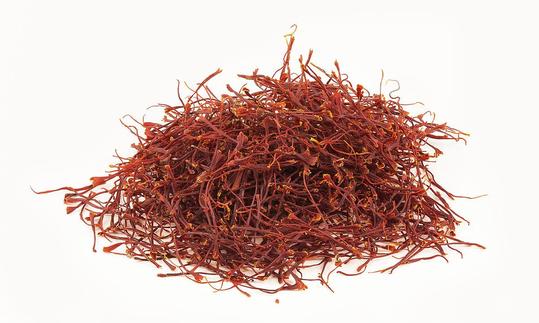

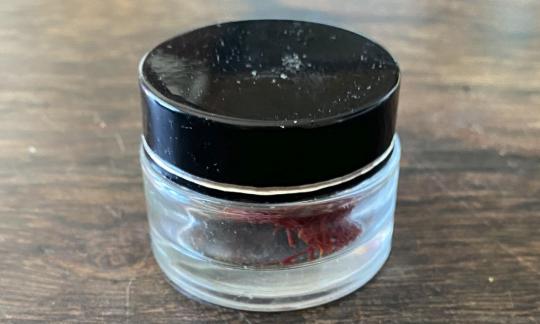

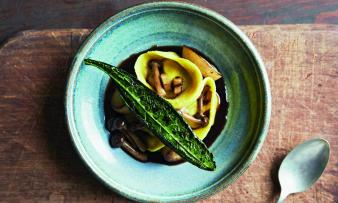
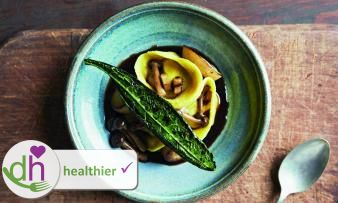
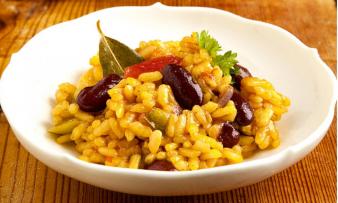





Comments